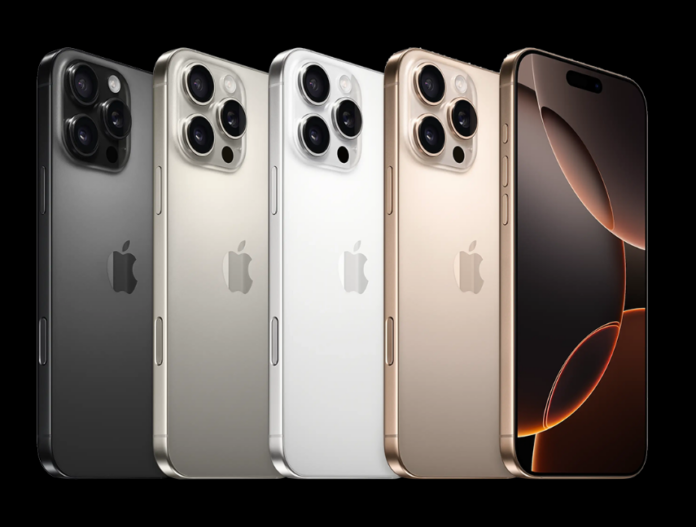Xiaomi 15 Ultra and iPhone 16 Pro Max represent the pinnacle of smartphone innovation, each pushing the boundaries of design, performance, and camera technology. With Xiaomi focusing on cutting-edge hardware and Apple perfecting its seamless ecosystem, choosing between them isn’t just about specs, it’s about priorities.
Whether you value extreme battery life, pro-level photography, or long-term software support, this comparison will break down their key differences to help you decide which flagship suits you best.
1. Design and Display

Xiaomi 15 Ultra and iPhone 16 Pro Max both have premium builds, but they take different approaches. Xiaomi uses aerospace-grade glass fiber and an aluminum frame, while Apple opts for a grade-5 titanium frame, making it slightly more durable. The Xiaomi 15 Ultra’s design is bulkier, which some may find less ergonomic, but it adds a unique aesthetic with its eco-leather back option. Meanwhile, the iPhone 16 Pro Max keeps its minimalist and refined design, making it feel more premium in hand.
In terms of display, Xiaomi leads with a sharper 1440p LTPO AMOLED panel and a peak brightness of 3200 nits, ensuring excellent outdoor visibility. Apple’s 6.9-inch Super Retina XDR OLED display has a lower resolution but offers strong color accuracy, an always-on feature, and up to 2000 nits in high brightness mode.
Xiaomi’s higher resolution and brightness make it superior for content consumption, but Apple’s display has better software optimizations.
If you prioritize a sharper, more immersive display, Xiaomi is the better choice, whereas Apple offers a smoother experience with iOS enhancements.
Please Note: When you buy something using the links in our articles, we may earn a small commission at no cost to you.
2. Specifications

The Xiaomi 15 Ultra packs the Snapdragon 8 Elite, while the iPhone 16 Pro Max uses Apple’s A18 Pro. Apple’s chipset typically outperforms Android processors in efficiency and sustained performance, but Xiaomi’s chip is no slouch, offering top-tier power for gaming and multitasking. Apple’s NVMe storage is faster than Xiaomi’s UFS 4.1, but both devices have generous storage options.
When it comes to battery, Xiaomi takes the lead with a massive 6000mAh (China variant) and 5410mAh (Global), while Apple offers only 4685mAh. Xiaomi also charges significantly faster with 90W wired and 80W wireless charging, compared to Apple’s slower wired and wireless charging speeds.
If you need long-lasting battery life and quick refueling, Xiaomi is the clear winner. However, Apple’s efficiency in power management helps it perform well despite the smaller battery.
3. Camera

Xiaomi’s 15 Ultra is a camera powerhouse with its quad-camera setup, including a 1-inch 50MP main sensor, a 200MP periscope telephoto, and a 50MP ultrawide. Apple takes a different approach with its triple-camera system, featuring a 48MP main, 12MP 5x periscope telephoto, and 48MP ultrawide sensor. The Xiaomi’s 200MP zoom camera offers more detail and versatility, but Apple’s computational photography and sensor-shift stabilization improve low-light and video performance.
For video, Xiaomi supports 8K recording, while Apple focuses on ProRes and spatial video, making it ideal for professional content creators. The iPhone also delivers more natural-looking colors in its photos, while Xiaomi’s Leica lenses produce a more dramatic and vibrant image. If you need extreme zoom and raw power, Xiaomi is better, but for video and consistency, the iPhone is superior.
4. Pricing
The Xiaomi 15 Ultra is priced at approximately $1,320, while the iPhone 16 Pro Max starts at $1,014. This makes Xiaomi notably more expensive, especially considering Apple’s base model offers a similar storage configuration. However, Xiaomi provides more RAM (12GB or 16GB compared to Apple’s 8GB) and faster charging speeds, which may justify the higher price for power users.
Apple, on the other hand, offers better long-term value with consistent software updates and a strong resale market. If you want the best hardware for the price, Xiaomi is compelling, but Apple remains the better long-term investment.
5. Conclusion

Xiaomi’s biggest advantage is its superior battery life, faster charging, and advanced camera hardware, particularly its 200MP periscope zoom. It also has two-way satellite communication, which Apple matches with its emergency satellite SOS. The iPhone 16 Pro Max stands out with its refined iOS ecosystem, more reliable software updates, and unique features like spatial video and ProRes support.
Ultimately, Xiaomi excels in hardware, while Apple leads in software optimization and ecosystem experience. If raw specs and battery life matter more, Xiaomi is the better choice. But for reliability, long-term support, and video excellence, the iPhone 16 Pro Max holds the edge.
Read More:
- Xiaomi 15 Ultra vs 15 Pro: Is the extra cost worth it?
- Get Xiaomi 15 Ultra Global Edition: Flagship performance with 2K display & Leica camera
- Xiaomi 15 Ultra or Vivo X200 Pro: Which is the better choice?
- Comparing iPhone 16 Pro Max and Samsung Galaxy S25 Ultra





